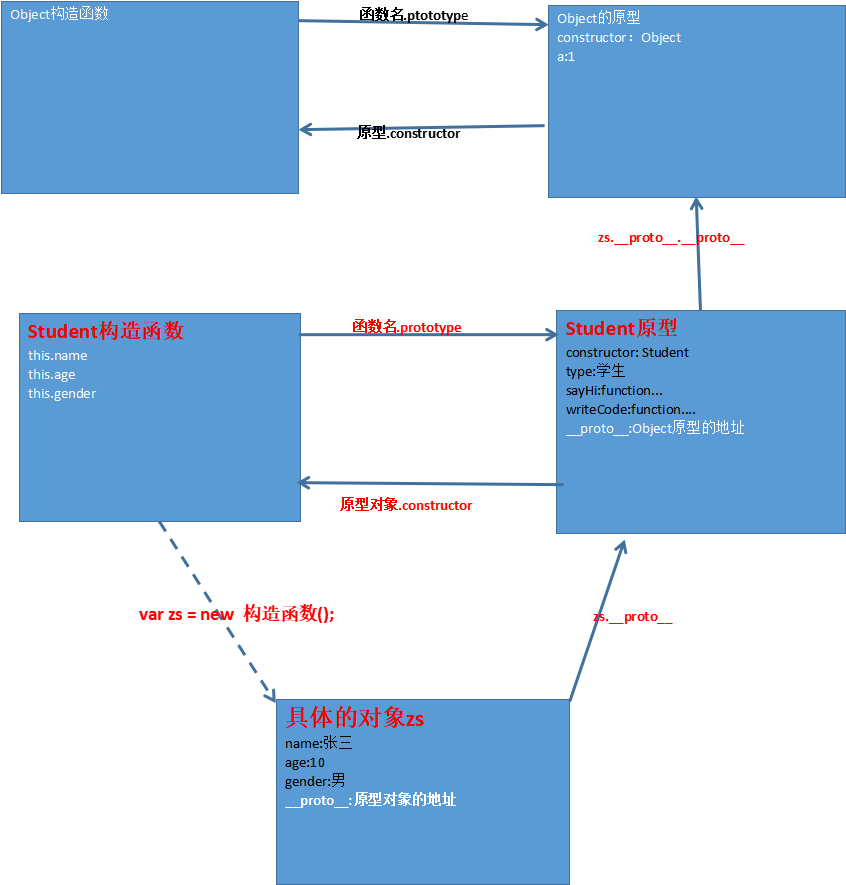首先介绍下原型~
原型的作用:把方法放到原型中,就可以让同类型的对象共享 。
当我创建一个构造函数。构造函数里有原型。通过:构造函数名.prototype获取到当前构造函数的原型。
function Student(name,age,gender) {
// 属性
this.name = name;
this.age = age;
this.gender = gender;
// 方法
this.writeCode = function() {
console.log('我会写代码')
};
this.sayHi = function(){
// 方法内部中this,代表的是调用方法的对象
console.log('我叫' + this.name + ',今年' + this.age);
};
}
原型内部自带一个constructor,代表的就是构造函数
// 获取原型:
var yx = Student.prototype;
// 原型内部自带一个constructor,代表的是构造函数
// 构造函数和原型的关系:
// 构造函数可以通过 prototype 获取到原型
// 原型可以通过 constructor 找到构造函数
console.log(yx.constructor === Student); // true;
实例对象与原型之间的关系:
① 先从对象本身中查找,若查找不到
② 则通过对象自带 proto提供的原型地址,找到原型
③ 从原型中去查找
// 学生类→ 构造函数
function Student(name, age, gender) {
// 属性
this.name = name;
this.age = age;
this.gender = gender;
}
// 获取原型
var yx = Student.prototype;
// 把不变的属性放入原型中
yx.type='学生';
// 创建对象
var zs = new Student('张三', 10, '男');
// 对象可以访问得到原型中成员
console.log(zs.type); // 学生
console.log(zs.__proto__ === yx) // true
